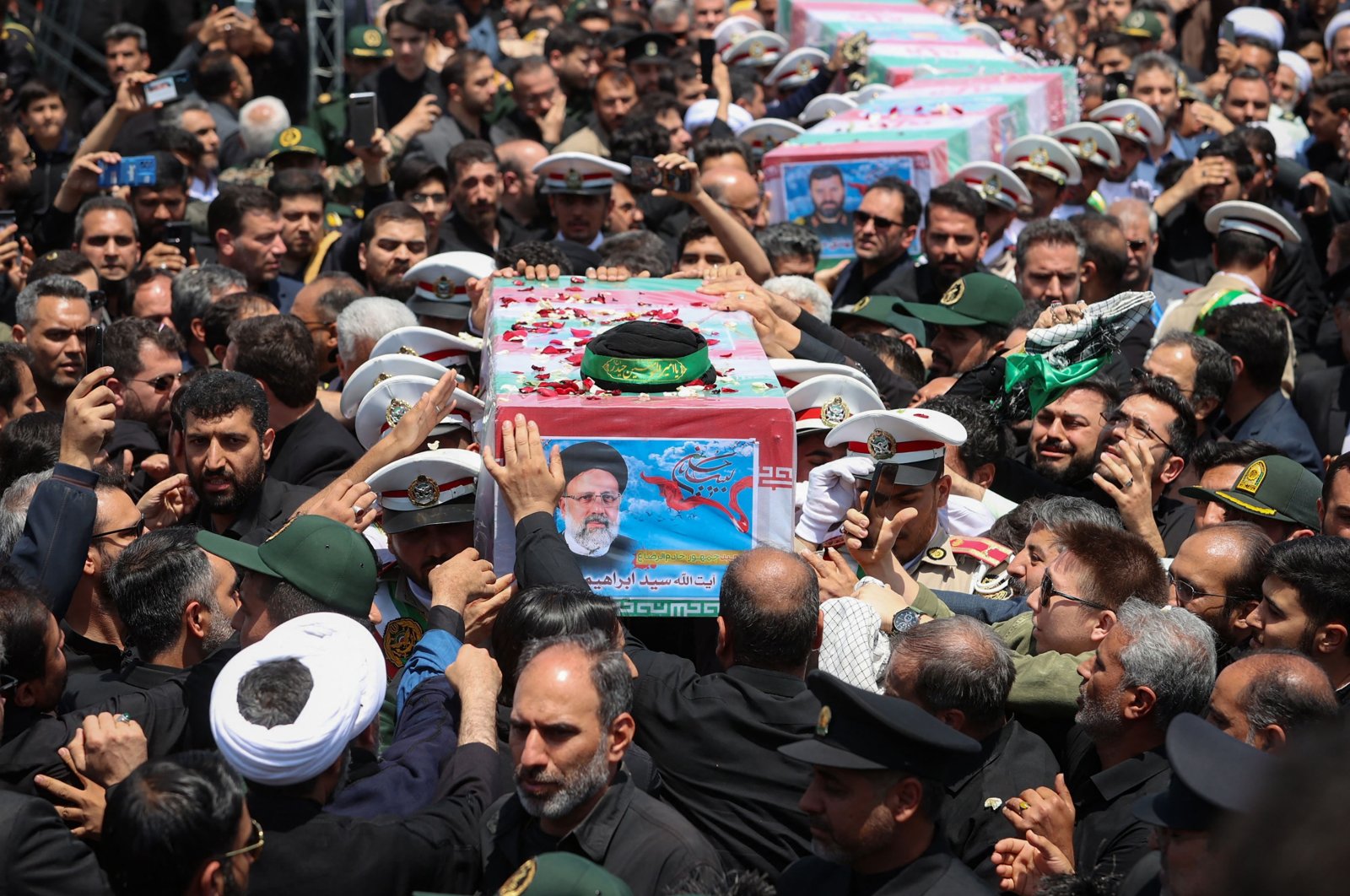
Iran interred Thursday its late president at the holiest site for Shiite Muslims in the Islamic Republic, a final sign of respect for a protege of Iran's supreme leader killed in a helicopter crash earlier this week.
President Ebrahim Raisi's burial at the Imam Reza Shrine in Mashhad cappped days of processionals through much of Iran, seeking to bolster the country's theocracy after the crash that killed him, the country's foreign minister and six others.
However, the services did not draw the same crowds as those who gathered for services for Revolutionary Guard Gen. Qassem Soleimani in 2020, slain by a U.S. drone strike in Baghdad.
It's a potential sign of the public's feelings about Raisi's presidency during which the government harshly cracked down on all dissent during protests over the 2022 death of Mahsa Amini in police custody.
Thursday morning, thousands in black gathered along a main boulevard in the city of Birjand, Raisi's hometown in Iran's South Khorasan province along the Afghan border.
A semitruck bore his casket down the street, with mourners reaching out to touch it and tossing scarves and other items to be placed against it for a blessing. A sign on the truck read: "This is the shrine.”
Hours later, Raisi's casket arrived in Mashhad. He was buried at the Imam Reza Shrine, where Shiite Islam's 8th imam is buried. The region has long been associated with Shiite pilgrimage. A hadith attributed to Islam's Prophet Mohammad says anyone with sorrow or sin will be relieved through visiting there.
Raisi became the first top politician in the country to be buried at the shrine, which represents a major honor for the cleric.
The death of Raisi, Foreign Minister Hossein Amirabdollahian and six others in the crash on Sunday comes at a politically sensitive moment for Iran, both at home and abroad.
Raisi, who was 63, had been discussed as a possible successor to Iran’s supreme leader, the 85-year-old Khamenei. None of Iran’s living past presidents – other than Khamenei, who was president from 1981 until 1989 – could be seen in state television footage of Wednesday’s prayers. The authorities did not explain their apparent absence.
Iran has set June 28 as the next presidential election. For now, there’s no clear favorite for the position among Iran’s political elite – particularly no one who is a Shiite cleric, like Raisi.
Acting President Mohammad Mokhber, a relatively unknown first vice president until Sunday's crash, has stepped into his role and even attended a meeting between Khamenei and Hamas leader Ismail Haniyeh on Wednesday.
State media circulated photos Thursday showing a meeting between Iran's paramilitary Revolutionary Guard chief and the head of its expeditionary Quds Force and representatives from Hamas, Lebanon's Hezbollah and Yemen's Houthi rebels.
That's another sign of Iran's government's commitment to those armed groups against its rivals, Israel and the United States.
Meanwhile, former Foreign Ministers Mohammed Javad Zarif and Ali Akbar Salehi and other dignitaries paid respects to Amirabdollahian at Iran's Foreign Ministry, where his casket was put on display.
His body was later interred in Shahr-e Rey just outside of Tehran at the Abdol Azim shrine, another final resting place for those famed in Persian history.
"Give Soleimani our greetings," a religious singer said as Amirabdollahian's body was placed inside its final resting place, referring to the slain general.
